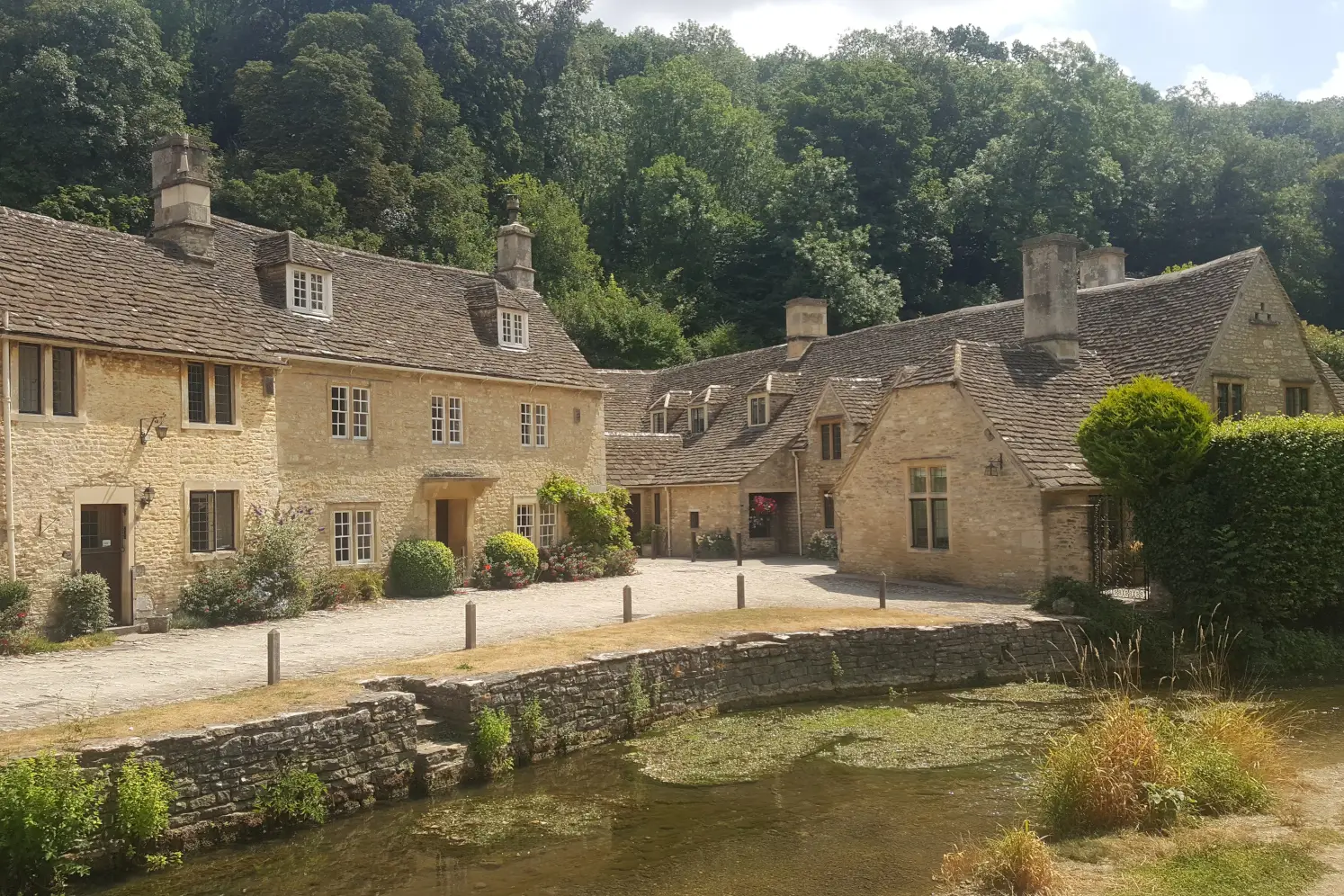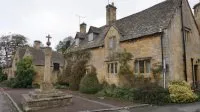The beautiful city of Bath offers many stunning sights to visit, but also many hidden gems to explore. Most people visit the Best of Bath, from Bath Abbey to the Roman Baths and other crowded sights, but do not realise that the spa city is packed with hidden gems. From enchanting Prior Park to the charming Kennet & Avon Canal and breathtaking Alexandra Park, explore Bath off the beaten path and discover the top 7 hidden gems.
Contents:
1. Kennet & Avon Canal
2. Bathwick Meadow
3. Prior Park
4. Alexandra Park
5. The 7 crescents of Bath
6. The Botanical Gardens
7. Walcot Village
1. Kennet & Avon Canal
Discover picturesque locks, stunning Georgian town houses and colourful narrowboats, as you walk along the charming Kennet & Avon Canal.
The Kennet & Avon Canal offers a peaceful walk along its enchanting waters and is one of the top places to escape to in Bath. Strolling first through the city, you’ll discover stunning Georgian town houses lining the canal. Chief among them is Cleveland House which was built over the waters. The charming canal then crosses Sydney Gardens, a park which was popular in Georgian times and boasts beautiful cast-iron bridges. The canal then leaves the city behind and enjoys the lovely country scenery of the Cotswolds.
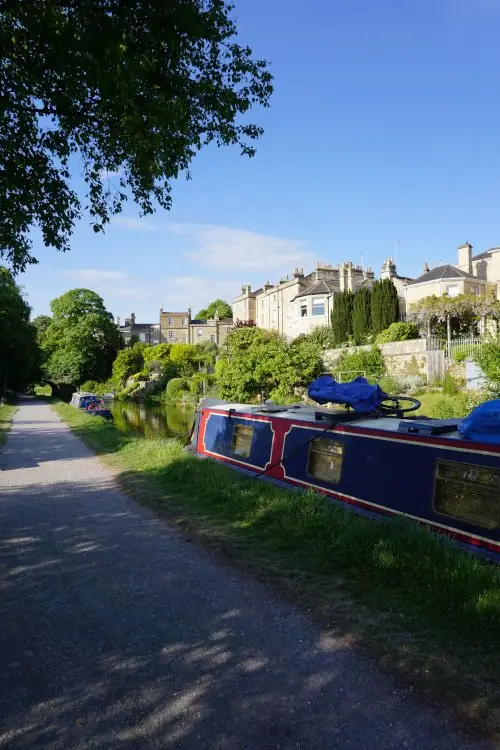
Built in the 18th and 19th centuries, the Kennet & Avon canal flows for 87 miles and links London to the Bristol Channel. In Bath, the Kennet & Avon Canal runs from Widcombe Parade, south of the city, to Bathampton and beyond. Many strollers, boaters, dog walkers and cyclists enjoy the canal path, especially over weekends. Walking along the peaceful canal, you can admire the colourful narrowboats lazily cruising on the waters or moored to the banks, as well as the picturesque and intricate locks.
Top tip:
In Bathampton, you can stop for refreshments at the George Inn before making your way back to Bath or continuing along the canal path.

How to get there:
You can reach the Kennet & Avon Canal via different roads: St Matthew’s Place in Widcombe, Pulteney Gardens, Bathwick Hill, Sydney Road, Sydney Gardens, Beckford Road, Hampton Row or Grosvenor Bridge Road. Just keep an eye out for the canal and its picturesque locks.
The walk from Widcombe to Bathampton via the Kennet & Avon Canal path takes approximately 45 minutes one way and is on flat terrain with a few steps to climb. Please note that at the intersection with Bathwick Hill, you’ll need to switch banks by walking back up to street level and crossing the road. Just follow the signposts.
2. Bathwick Meadow
For breathtaking views of the city of Bath and lush meadows through which you can freely roam, explore the verdant Bathwick Meadows.
Bathwick Meadows is a series of lush fields with magnificent views of Bath. From Bathwick Meadows, you can fully appreciate the skyline of the spa city and spot Bath’s top sights, including Bath Abbey, the Empire hotel, St Michael’s Church and the many rows of Georgian terraced houses that Bath is renowned for.

Bathwick Meadows is off the beaten path and is located behind Sydney Buildings on the other side of the Kennet & Avon Canal from the city. To get to this hidden gem, you’ll need to walk up steep flights of steps and a steep hill, but the breathtaking views of the city and the luscious expanse are definitely worth it. As such, Bathwick Meadow is a perfect picnic spot.
Top tip:
From Bathwick Meadow, you can explore the surrounding meadows and follow the path to Widcombe Hill and the Bath Skyline walk. For more information, check out the Bath Skyline walk guide.

How to get there on foot:
To get to Bathwick Meadow, make your way to the Kennet & Avon Canal, walk south from Bathwick Hill or north from Pulteney Gardens, cross the foot bridge over the Kennet & Avon Canal located between these two streets, walk up the lane, cross Sydney Buildings and walk up the steep flights of steps to Bathwick Meadow. Alternatively, you can access Bathwick Meadow from Bathwick Hill at the level of Cleveland Walk and Bathwick Hill House.
3. Prior Park
Escape to the 18th century scenic gardens of Prior Park and enjoy striking views of the city of Bath.
Prior Park is located in a peaceful valley with stunning views over the city of Bath and the surrounding Cotswold Hills, and is one of the best places to escape to for an afternoon. You can stroll through the serene and scenic park, which comprises beautiful gardens, lush woods, verdant meadows and charming lakes.
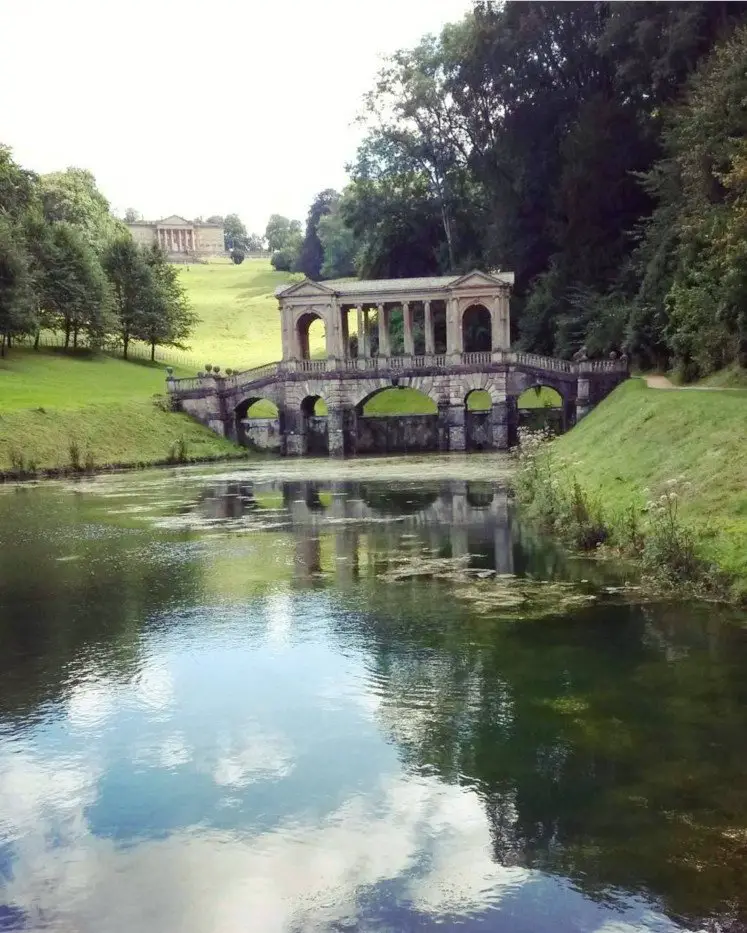
Prior Park also boasts one of the rare Palladian bridges left in the world. Built in the 18th century by Ralph Allen and featuring romantic arches, Greek colonnades and the typical Bath limestone, the striking bridge is one of the highlights of this hidden gem. After your stroll through time, you can enjoy refreshments at the tea shed by the lakes.
Also built by Ralph Allen, Prior Park mansion overlooks Prior Park. Ralph Allen built the stately home to showcase his newfound status as a successful businessman as well as the quality of his limestone. The building is now a college and unfortunately cannot be visited.

Top tip:
Check out the graffiti engraved on the stone of the Palladian bridge. The oldest graffiti date back to the 18th century.
For more information and directions to Prior Park, please visit nationaltrust.org.uk. There is an entrance fee to this landmark. Please note that Prior Park features steep slopes, steep flights of steps and uneven paths.
4. Alexandra Park
For spectacular panoramic views of Bath, hike Beechen Cliff hill and explore the serene Alexandra Park.
Located south of the city at the top of Beechen Cliff hill, Alexandra Park overlooks the beautiful city of Bath and is one of the best off-the-beaten-path places to visit. From the panoramic viewpoints in the park, you can spot Bath’s famous landmarks, from Bath Abbey to the Royal Crescent. You can also admire the rows upon rows of Georgian terraced houses lining the streets. Plus, you can enjoy striking views of the Kennet & Avon canal, the River Avon and the surrounding Cotswold Hills.

Alexandra Park is an 11 acre park which was opened in 1902 to commemorate the coronation of Edward VII and was named in honour of Queen Alexandra. Along with its two spectacular viewpoints located at the north corners of the park, this hidden gem enjoys all the delights of a park, including tree-lined avenues and a playground.
Top tip:
Visit the delightful streets surrounding the park, including Shakespeare Avenue, Byron Road, Shelley Road and Kipling Avenue, and enjoy the charming architecture of the town houses.

How to get there:
You can reach Alexandra Park on foot via Jacob’s Ladder. Starting at the intersection of Lyncombe Hill and Calton Road, the uphill path includes steep steps through woodland. Hiking Jacob’s Ladder, you’ll enjoy lovely views of the city of Bath and the surrounding hills and valleys. You can also get to the park via Holloway street. From Holloway, follow the signposts, take the woodland path and hike the steep steps.
Alternatively, you can drive or take the bus to Alexandra Park. The main entrance to the park is at the end of Shakespeare Avenue which you can reach via Wells Road. There is limited parking in the park which is closed to vehicles between dusk and dawn. From the town centre, buses 3 and 4 will take you up Wells Road.
5. The 7 crescents of Bath
To discover the most remarkable examples of Georgian architecture, explore the 7 crescents of Bath.
While the Royal Crescent is one of the most famous landmarks in Bath, the spa city also features 6 other crescent-shaped rows of terraced houses, all as equally delightful, intriguing and stunning. Dating back to the late 18th and early 19th centuries, the crescents enjoy delightful communal gardens and lovely views of Bath.

Located on Lansdown Hill, Lansdown Crescent, Somerset Place, Cavendish Crescent and Camden Crescent were built in the heart of Georgian Bath north of the city. Cavendish Crescent is the shortest crescent with only 11 houses and the plainest with no central colonnades or embellishments. The crescent was the last to be completed in 1830. Camden Crescent suffered a landslide in the 1780s which destroyed some houses. As a result, the central row of pillars is no longer in the middle of the crescent.
Widcombe Crescent is located south of Bath in Widcombe, while Norfolk Crescent is to the east of the city by the River Avon. Both crescents are off the beaten path. Last but not least, the Royal Crescent is one of the most iconic landmarks in Bath and one of the most remarkable examples of Georgian architecture. Out of the 7 crescents in Bath, the Royal Crescent is the longest as well as the most majestic.
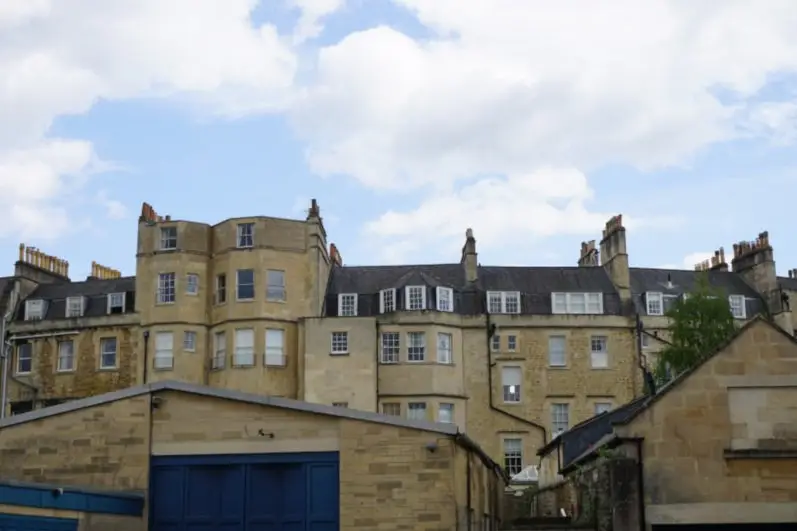
Top tip:
When visiting the crescents, take the time to discover the back of the curved rows of houses. While the fronts of the crescents are perfectly symmetrical, the backs are a mishmash of different shapes and styles. This is because the architects only designed the façade of the crescents and left the rest of the house to be built by the owners.
6. The Botanical Gardens
Discover exotic and enchanting plants at the Botanical Gardens of Victoria Park.
The Botanical Gardens harbour an array of colourful, unusual and delightful plants, flowers, shrubs and trees. Dating from the late 19th century, this hidden gem is tucked away in a corner of Royal Victoria Park and also comprises a charming pond and a replica of a Roman Temple.

The second you pass the charming wrought iron fence into the Botanical Gardens, you’ll be transported to another world surrounded by a variety of shapes, colours and bouquets. As you walk along the garden paths, your senses will be awakened to a vibrant, rich and remarkable escape.
Top tip:
Royal Victoria Park is also worth exploring with its large green parkland and tree-lined avenues.

How to get there on foot:
From the city centre, follow the Royal Avenue and cross Marlborough Buildings. Once past the park fences and the obelisk, take the road straight ahead and walk past the pond and the café. Around the corner and on your right, you’ll see the wrought iron fence of the Botanical Gardens.
7. Walcot Village
Enjoy a stroll through Walcot Village and peek into the many antique and independent shops lining the street.
Also known as the Artisan Quarter, Walcot Village stretches from the bottom of Walcot Street in the city centre to Walcot Terrace and Walcot Buildings along London Road. This hidden gem is one of the best off-the-beaten-path places in Bath where you can spend an afternoon browsing the exotic and remarkable antiques and independent shops.

From antique furniture, silverware, jewellery to works of art, you’ll find astonishing items in Walcot Village. Running every Saturday at the Cattle Market car park, the Antique and Flea Market is also worth a visit. If you’re lucky, you might even unearth a rare find!
Top tip:
On your stroll through Walcot Village, spot the grotesque stone faces on the wall of The Paragon. The faces were carved in Bath’s signature limestone and represent mythical but also local characters.

Please note that most antique shops are open from 10 a.m. to 5.30 p.m. and are closed on Sundays.
Explore Bath further
Along with its many hidden gems, the beautiful city of Bath also features stunning Roman Baths, the majestic Bath Abbey, the eye-catching Royal Crescent, as well as other striking Georgian architecture. Explore the key landmarks that form the striking spa city with the Best of Bath guide and the Bath self-guided walking tour.

Share this guide:
Pin this for later:


